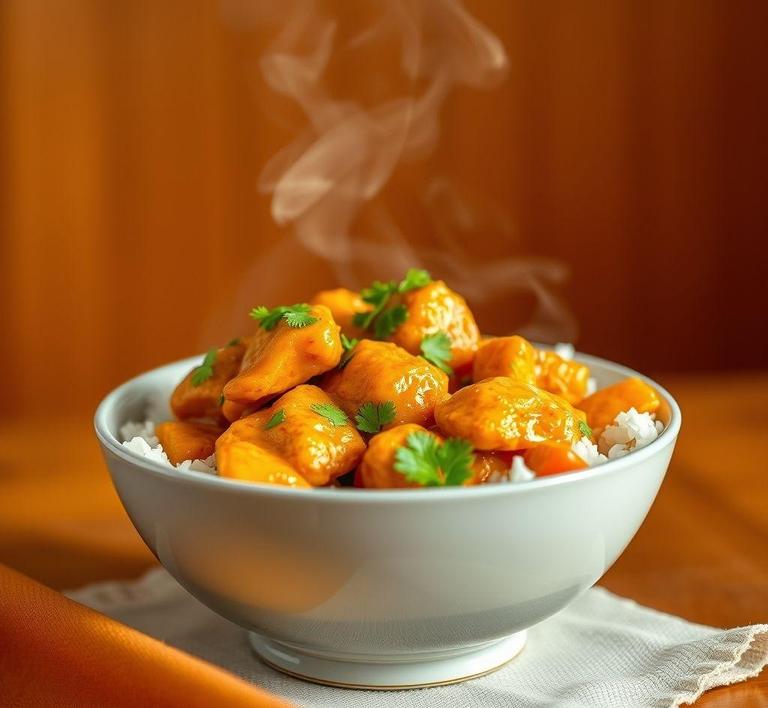If you’re someone who loves to cook in bulk and save leftovers for later, you might have wondered whether it’s okay to refreeze chicken curry. The good news is, yes, you can refreeze chicken curry! But like with any dish, there are some important things to keep in mind to maintain its flavor, texture, and safety. In this guide, we’ll walk you through everything you need to know about refreezing chicken curry, from the best practices to avoid food spoilage to how to properly store and reheat it for the most delicious results. So, grab your favorite curry recipe and let’s dive in!
Can You Refreeze Chicken Curry?

The short answer: Yes, you can refreeze chicken curry-but only under specific conditions and with full awareness of the safety guidelines and potential quality changes.
Refreezing chicken curry is not inherently dangerous, but it hinges on one critical factor: whether the curry was safely handled during the initial thaw. If the chicken curry was thawed in the refrigerator and kept at a temperature below 40°F (4°C) the entire time, then it is safe to refreeze. However, if the dish was left at room temperature for more than two hours, or was thawed using quicker methods like a microwave or cold-water bath, then refreezing it poses a risk of bacterial growth and foodborne illness.
The key bacteria of concern here is Clostridium perfringens, commonly found in cooked meats and gravies. Given the rich, often creamy or tomato-based nature of chicken curry, the environment becomes particularly favorable for microbial growth once temperatures rise into the "danger zone" (40°F-140°F / 4°C-60°C). Therefore, the decision to refreeze should be grounded in strict food safety protocols.
How To Refreeze Chicken Curry?
If you’ve determined that your previously thawed chicken curry has been safely stored, follow these steps to refreeze it with minimal compromise to taste and texture:
-
Portion It Properly:
Divide the chicken curry into individual or family-sized portions. This reduces the need to thaw and refreeze the entire batch multiple times. Use airtight freezer-safe containers or heavy-duty freezer bags, removing as much air as possible to minimize freezer burn.
-
Cool It First:
If you’re dealing with freshly cooked or recently reheated curry, allow it to cool completely before freezing. Hot food can raise the temperature inside the freezer, jeopardizing the safety of nearby frozen items. Place the container in an ice bath or stir it occasionally at room temperature (no longer than 1-1.5 hours) to speed up the cooling process.
-
Label and Date:
Always label the container with the date of refreezing. While properly stored chicken curry can last up to 2-3 months in the freezer, it’s best used within a month for optimal flavor and texture retention.
-
Freeze Quickly:
Place the curry in the coldest part of your freezer. Rapid freezing helps preserve the integrity of the sauce and prevents large ice crystals from forming, which can affect the texture upon reheating.
Quality Impact
While refreezing chicken curry can be done safely, it does take a toll on the dish’s sensory qualities. Let’s unpack the major areas of concern:
-
Texture:
Meat, especially chicken, suffers the most from repeated freezing and thawing. Each freeze-thaw cycle breaks down muscle fibers, leading to drier, tougher meat. While the sauce may help mask some of this degradation, the difference is noticeable-particularly in curries that rely on slow-cooked or marinated meats for tenderness.
-
Sauce Separation:
Curries made with dairy (e.g., cream or yogurt) or coconut milk are especially susceptible to separation when frozen multiple times. The emulsion that keeps fat and liquid integrated can break down, resulting in a grainy or oily consistency upon reheating. Stirring vigorously or reheating gently over low heat can sometimes salvage the sauce, but it won’t fully restore its original silkiness.
-
Flavor Deterioration:
Spices, herbs, and aromatics evolve in flavor over time-some mellow, others intensify, and still others become bitter or stale. Repeated freezing can lead to uneven taste distribution, and certain spices like cumin and coriander may lose their vibrancy. Onions and garlic, once frozen and thawed multiple times, can develop slightly metallic or off-putting notes.
In culinary practice, refreezing chicken curry is a matter of both safety and sacrifice. If the dish has been properly thawed in the refrigerator and hasn’t lingered in the danger zone, it can be refrozen with minimal health concerns. However, every trip through the freeze-thaw cycle diminishes its texture, disrupts the sauce’s consistency, and mutes its nuanced spice profile.
To mitigate these issues, plan ahead: freeze in portions, store properly, and aim to thaw only what you’ll eat. For the best dining experience, refreezing should be your last resort-not your go-to preservation method. When handled thoughtfully, however, it’s entirely possible to enjoy a second helping of your favorite chicken curry without compromising food safety or flavor too much.
Is It Safe To Refreeze Chicken Curry?
Refreezing chicken curry isn’t as simple as tossing a container back into the freezer and hoping for the best. It’s a practice that walks a fine line between culinary convenience and food safety. So, is it safe to refreeze chicken curry? The answer: yes, but only under the right circumstances.
The critical factor here is temperature control. If the chicken curry was thawed in the refrigerator and has been kept at a consistent temperature below 40°F (4°C), refreezing is generally safe. This is because cold temperatures slow bacterial growth significantly, meaning the food remains within safe consumption limits. However, if the curry was thawed at room temperature (for example, on the kitchen counter) or has been sitting out for more than two hours (or one hour in temperatures over 90°F/32°C), it enters what the USDA calls the ‘danger zone’ – between 40°F and 140°F – where bacteria multiply rapidly. In such cases, refreezing becomes risky and can potentially lead to foodborne illnesses like salmonella or listeria.
Furthermore, every time you freeze and thaw food, its quality diminishes. Moisture is lost in the process, leading to changes in texture, flavor, and aroma. Chicken, being a lean protein, can become rubbery, and the rich, spiced sauce of the curry may separate or lose some of its flavor complexity after repeated freezing. While it’s safe if done correctly, it’s not always ideal from a culinary standpoint.
Signs That Chicken Curry Should Not Be Refrozen
Before you even consider putting that curry back into the freezer, take a moment to inspect it. Food safety isn’t just about temperature-it’s also about sensory cues. Here are key warning signs that chicken curry has crossed the line from ‘maybe’ to ‘definitely not’ in terms of refreezing:
- Off Odor: One of the most reliable indicators of spoilage is smell. If your curry smells sour, rancid, or has a pungent, unusual odor, it’s a red flag. The spices in curry can sometimes mask off smells, so if you notice anything off, don’t take chances.
- Discoloration: A noticeable change in color-particularly a grayish hue to the chicken or a dull, lifeless look to the sauce-could indicate bacterial activity or oxidation.
- Texture Changes: Slimy or sticky chicken is often a sign of bacterial growth. If the curry sauce appears separated, curdled, or has an oily film on top that wasn’t there before, it’s best to discard it.
- Time Out: If the curry has been sitting out at room temperature for more than two hours, it’s unsafe to refreeze. Bacteria multiply rapidly in this window, and no amount of freezing will undo that.
- Previous Freezing History: If the curry has already been frozen and thawed once before, think twice before refreezing it again. With each cycle, not only does the food degrade, but the safety window narrows considerably.
Common Refreezing Mistakes
Even well-intentioned home cooks can slip up when it comes to refreezing leftovers. Here are some of the most frequent mistakes people make:
- Thawing at Room Temperature: Leaving food to thaw on the countertop is one of the most dangerous practices, as it leaves it vulnerable to bacteria. Always thaw in the refrigerator or use the defrost setting on a microwave if you’re cooking it immediately afterward.
- Refreezing Large Portions: Freezing or refreezing curry in large, dense containers can prevent the food from freezing evenly or quickly enough, potentially allowing bacteria to flourish in the center. Smaller, portion-sized containers are safer and more efficient.
- Not Cooling Properly: Putting hot curry directly into the freezer can lower the overall temperature of your freezer and put nearby food at risk. It also slows the freezing process, leading to textural damage. Let it cool to room temperature (within the two-hour safety window), then refrigerate briefly before freezing.
- Multiple Freeze-Thaw Cycles: Repeatedly thawing and refreezing the same curry increases the risk of spoilage and contamination. Plan ahead by storing in individual meal-sized portions to reduce waste and the need for repeated thawing.
Tips And Tricks
Now that you know what to avoid, here are practical, pro-level tips to safely and effectively refreeze chicken curry:
- Use Freezer-Safe Containers: Opt for airtight, BPA-free plastic or glass containers, or heavy-duty freezer bags. Remove as much air as possible to prevent freezer burn.
- Label Everything: Date and label your containers so you know exactly when you froze the curry. Aim to consume refrozen food within one to two months for best quality.
- Freeze in Portions: Divide your curry into single-serve or meal-sized portions before freezing. This makes defrosting quicker, safer, and more convenient.
- Rapid Cooling Method: If you’re in a hurry, place the curry container in an ice bath or spread it out in a shallow container to cool it faster before freezing.
- Reheat Thoroughly: When you’re ready to eat the refrozen curry, make sure it reaches an internal temperature of 165°F (74°C). This ensures any potential bacteria are eliminated.
- Use High-Quality Ingredients: Starting with fresh chicken and well-cooked curry increases your margin of safety when refreezing leftovers.
Conclusion
Refreezing chicken curry is a balancing act between safety, quality, and practicality. While it is safe under controlled circumstances – specifically if the curry was thawed in the refrigerator and hasn’t lingered at room temperature – attention to detail is paramount. Recognizing spoilage signs, avoiding common mistakes, and implementing simple yet effective strategies can go a long way in preserving both the safety and flavor of your food.
Ultimately, when in doubt, it’s always better to err on the side of caution. Food poisoning is never worth the risk for the sake of salvaging a meal. But with good practices and a little foresight, your delicious chicken curry can enjoy a second life from freezer to plate, without compromising your health or taste buds.


